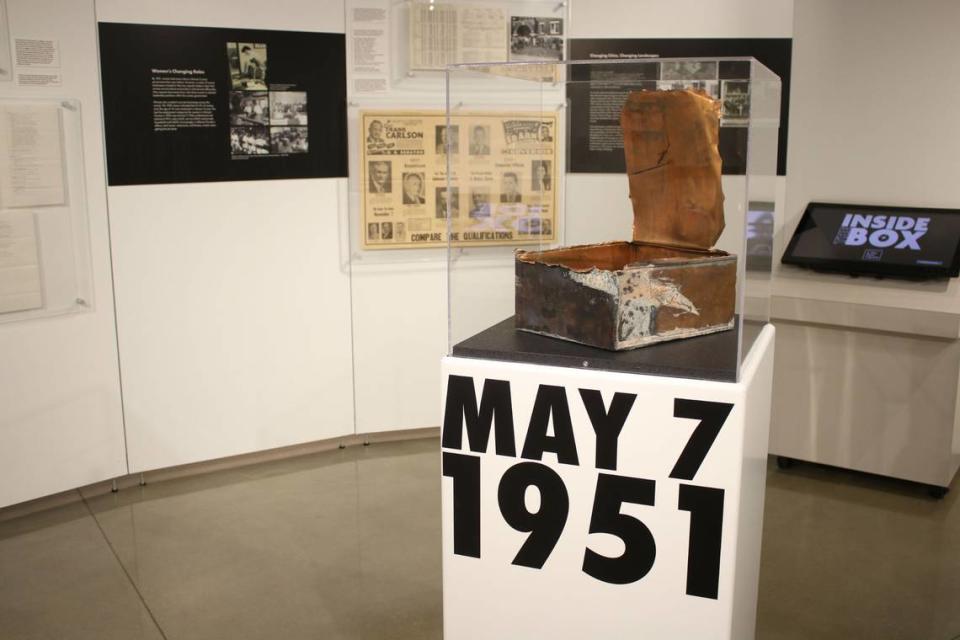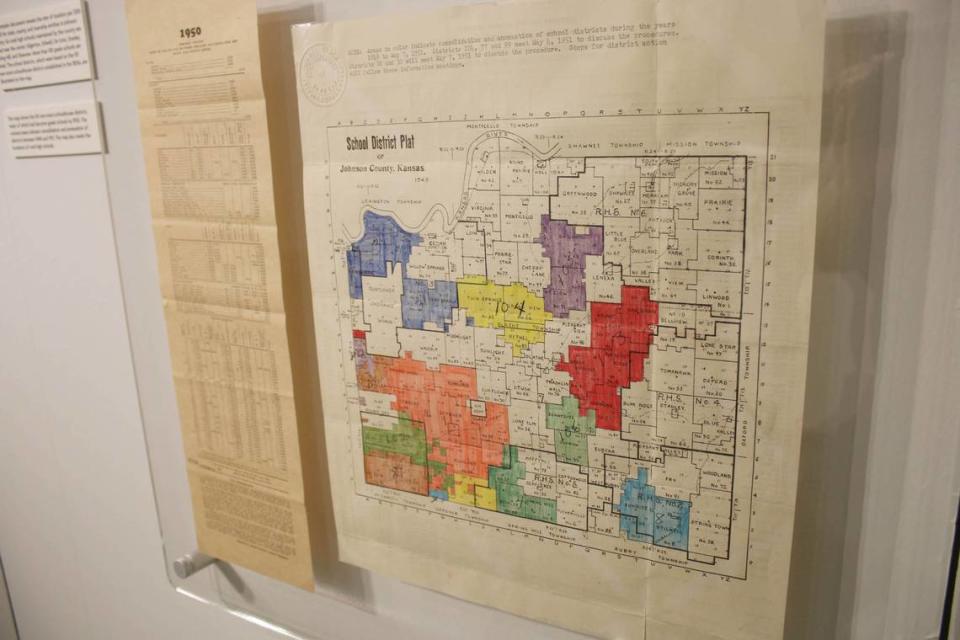No DeLorean needed: Head to this museum and step back in time to JoCo in the 1950s
Marty McFly had one way of getting a look at the 1950s: The character in “Back to the Future” jumped into a time-traveling DeLorean to do so. But there’s no need for science fiction if you’re hoping to catch a glimpse of JoCo’s history.
The Johnson County Museum has visitors covered with a new exhibit on a time capsule found at the old Johnson County Courthouse.
Buried behind the courthouse’s cornerstone in May 1951, the copper box came to light when workers demolished the building in 2021.
“I’m not sure how many people remembered what was behind that cornerstone, because I don’t think it said anything on the outside,” said Andrew Gustafson, curator of interpretation for the museum.
Though the outside has some water damage, the box did its job of keeping its contents safe.
“It was in really pretty incredible condition for being just inside a stone chamber for 70 years,” Gustafson said. “Nobody really knew what was in it. There was a fair bit of mystery around it.”
It’s not a large box — only about the size of three lasagna pans stacked up.

While processing it to add to the collection, museum officials exercised some caution, first taking the box to The Nelson-Atkins Museum of Art to have it X-rayed. That revealed paperclips and staples, so they knew that its contents would be mostly paper.
The other thing in the box was film.
“Some film is nitrate film and can be unstable and can spontaneously combust, so we knew we needed to be careful about how we opened that box. We wouldn’t want to use a power saw, for example, to open it up,” he said.
Just in case it caught fire, they opened it in the museum’s parking lot.
Their first glimpse of how the 1950s were different was in the way the items were protected. Where today, you might use a resealable plastic bag, “everything that was in there was sealed in envelopes or sealed up inside of tinfoil sealed with wax,” he said.
Mayors of some Johnson County cities wrote letters, while various county officials included descriptions and statistical information about what each of their departments did. Also inside were an assortment of newspapers, maps and directories.
J. Hubbard Minor, who served as mayor of Leawood, offered this prediction for the future that gives a flavor of the time: “There are many homes under construction, and if war can be avoided with Russia, the population should double within the next two or three years.”
Others, such as Judge Harley Haskin, also predicted a rapid growth in population. They were right. In the 1950 census, Olathe had about 5,600 residents. Now, its population is more than 20 times that.
A similar population boom happened in most of Johnson County’s cities.
Overland Park, Johnson County’s largest city today, isn’t even in the time capsule, because it wouldn’t be incorporated for nine more years.

The exhibit also includes a school district map that is radically different to today’s, showing the many smaller districts that existed before the Shawnee Mission, Blue Valley and Olathe school districts formed in the 1960s.
Because the capsule is very focused on government officials and what they had to share, a lot about life in 1951 didn’t make it in there.
“We’ve left out the common person. We’ve, in many ways, left out women from the contents,” Gustafson said. “We’re also missing other communities: the Latino community, the African-American community. All the things that are included really are about people in white society living in Johnson County in the 1950s.”
The 1892 courthouse that preceded the recently demolished one also had a time capsule in its cornerstone, and the museum has coins and other objects from it in its collection. Gustafson said they thought the microfilm reel from the 1951 capsule would contain copies of the documents from that capsule, but it didn’t.
What is in this latest capsule is an audio reel and photos of the cornerstone ceremony in 1951. Images include officials putting things in the time capsule as well as shots of the crowd. Alongside those photos was a crowd photo from the 1891 capsule.
“I think they had done a false installation and then developed those photographs, included them and then actually closed up that cornerstone,” Gustafson said.
Though the new Johnson County Courthouse does not contain a time capsule, two others are still waiting to be unearthed. One, buried by the Johnson County Old Settlers Association in 1998, is set to be unearthed in 2057 for Olathe’s bicentennial. The Johnson County American Revolution Bicentennial Committee also put one together in 1976 to be opened in 2076.
Inside the Box: A 1951 Time Capsule runs until May 4 at the Johnson County Museum, 8788 Metcalf Ave. Special events include “The Retro Housewife’s Guide, a Time Capsule Wardrobe” at 6 p.m. March 7 and “Inside the Box Behind-the-Scenes Tour” at 6 p.m. April 4. Go here to the Johnson County Museum website (JCPRD.com, search Inside the Box) for information on tickets.


